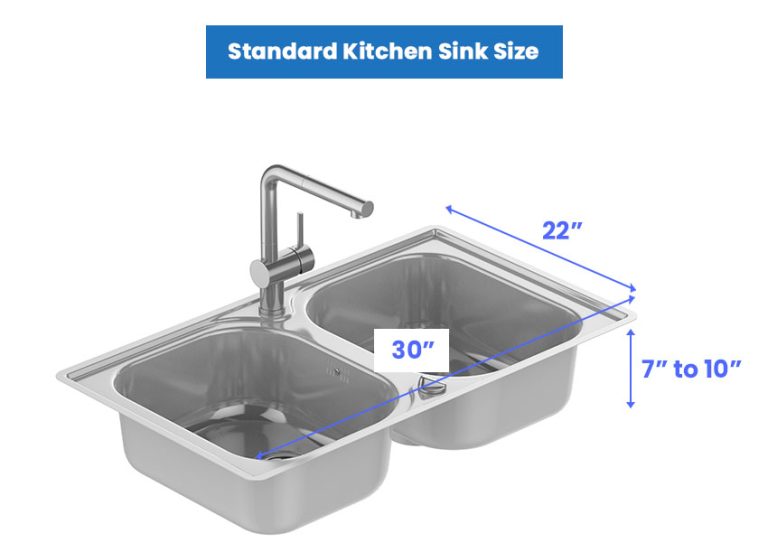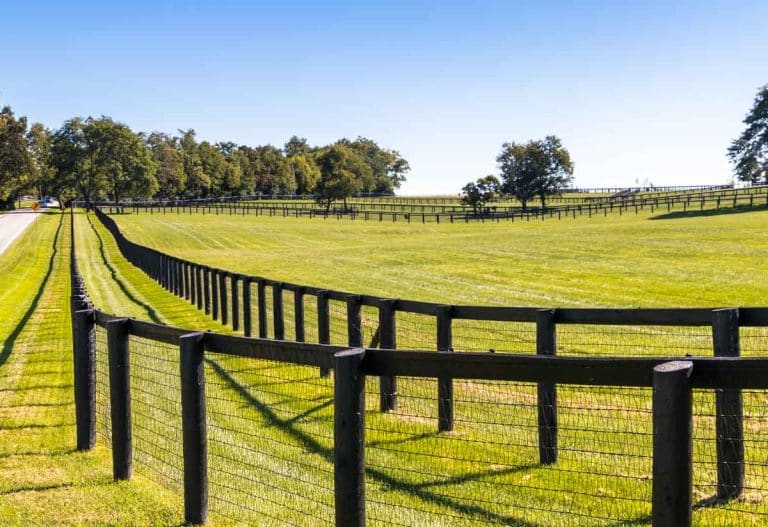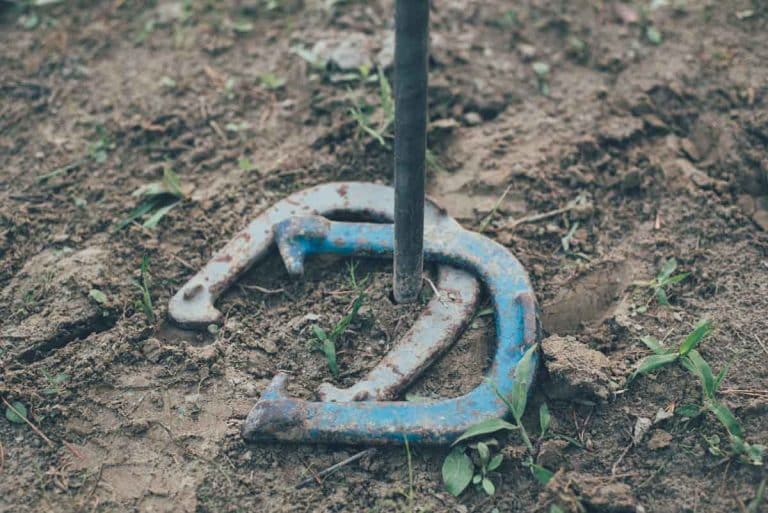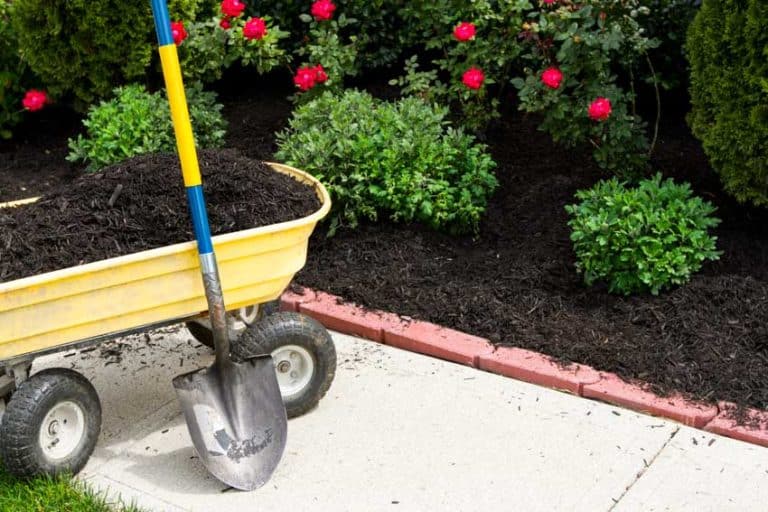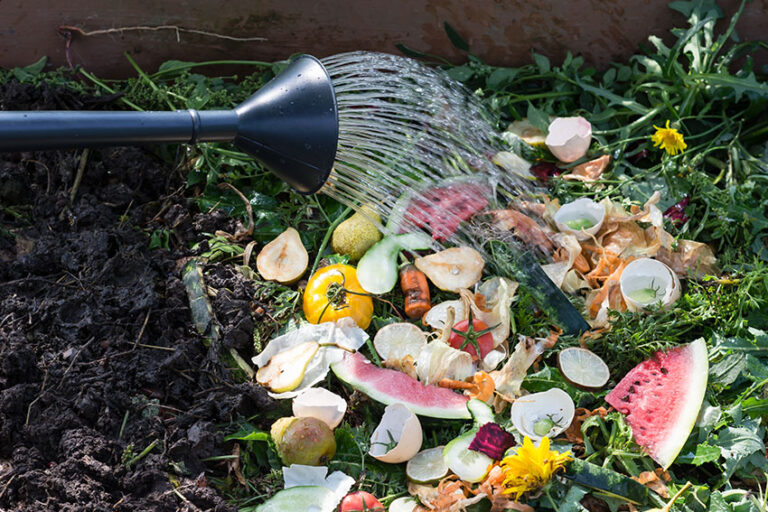What Are The Standard Dimensions for Sod? Pieces, Slabs And Rolls

One landscaping staple is a solid bed of beautiful, healthy-looking green grass that will make any front or backyard look great. An easy way to achieve that beautiful yard is by simply laying sod on the open ground. Knowing the sod dimensions, including standard pieces, slabs & roll sizes, and grass area coverage, is important to completing your lawn landscaping project.
How Big Is A Piece Of Sod?
The size of a single sod roll will be different from one landscape supplier to the next, giving the homeowners and their contractors a variety of sizes to choose from. It is essential to know how much sod you will need because too few will leave unattractive empty spaces. In addition, too much will add to the project’s overall cost. So, how big are sod pieces?
A single sod piece will have a dimension of 16 inches or about 41 centimeters for the width with a length of 24 inches or 61 centimeters. Although this is the usual size available, every farm or landscape supplier will have different sizes according to how they cut the pieces in the manufacturing.
There are pieces available in sections with a width of up to 60 inches or 152 centimeters and a length of 108 inches or 274 centimeters. Others will also cut their pieces with dimensions of 80 inches or 203 centimeters for the length with a width size of 18 inches or about 46 centimeters.
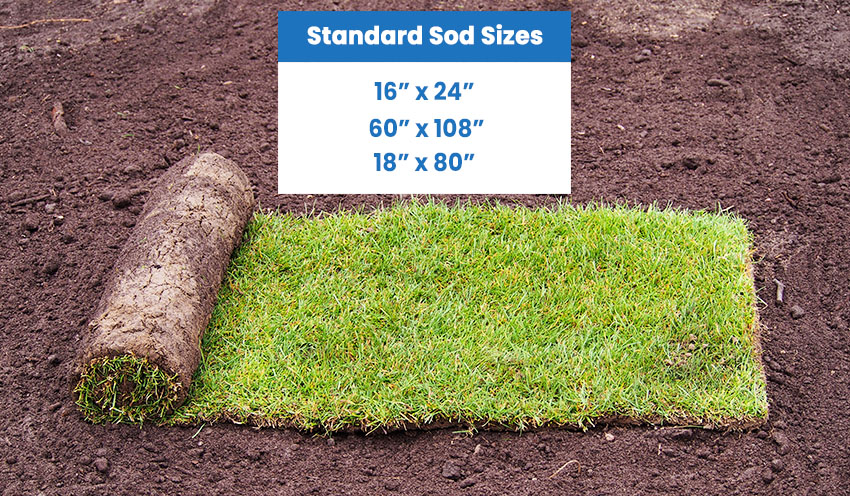
Standard Sod Size
One way to get an exact gauge of how big each sod piece will be available in your chosen store is to ask for their available sizes. From there, you and the contractor or the landscaper doing the canvassing will know how much you will need for the size of the area.
The most common size of sod almost available to all supply or landscaping stores is 16 inches or about 41 centimeters in width with a length of 24 inches or 61 centimeters.
There is no set standard for their size since it will differ in every store, but this size is small enough for smaller yards and big enough to buy in multiples for more sizable yards.
How Wide Is Sod?
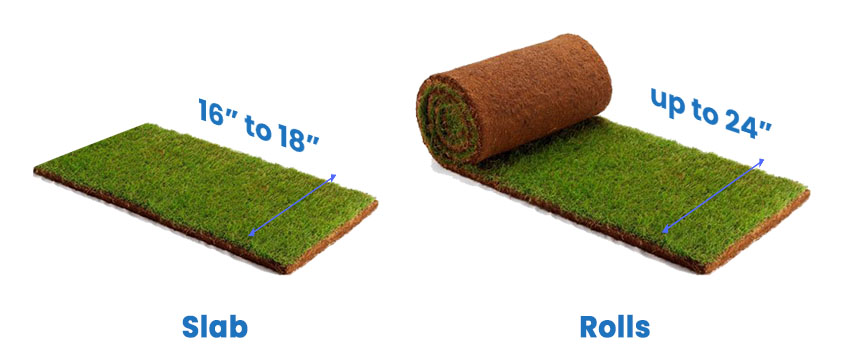
A slab of sod will usually measure from 16 inches or about 41 centimeters to wider ones at 18 inches or 46 centimeters. Rolls will significantly have wider widths than slabs and can go up to 24 inches or about 61 centimeters.
There is no set standard or one single requirement for how wide a slab or roll should be since it will be determined by the cut a farm or any manufacturer will do.
Knowing the width of the roll you will need for the yard is just as crucial as knowing the length. This will make it easier during the laying process and determine how easy each slab or roll will be to transport.
How Big Are Average Sod Slab Sizes?
The average sod piece is the ones cut into slabs. They can be utilized by different types of landscaping designs, whether smaller or more sizable ones. Slabs will come in many dimensions.
The most common slab size is 16 inches or about 41 centimeters for the width, with a length of 24 inches or 61 centimeters. Alternatively, the 18 by 24 inches or 46 by 61 centimeters is also a typical slab measurement many use.
If you want longer slabs, it will be more efficient to look into longer rolls. Bigger yards will benefit from longer yards. Although there will barely be a price difference, easier roll installation is more manageable than laying down individual slabs one by one.
How Many Square Feet Is A Piece Of Sod?
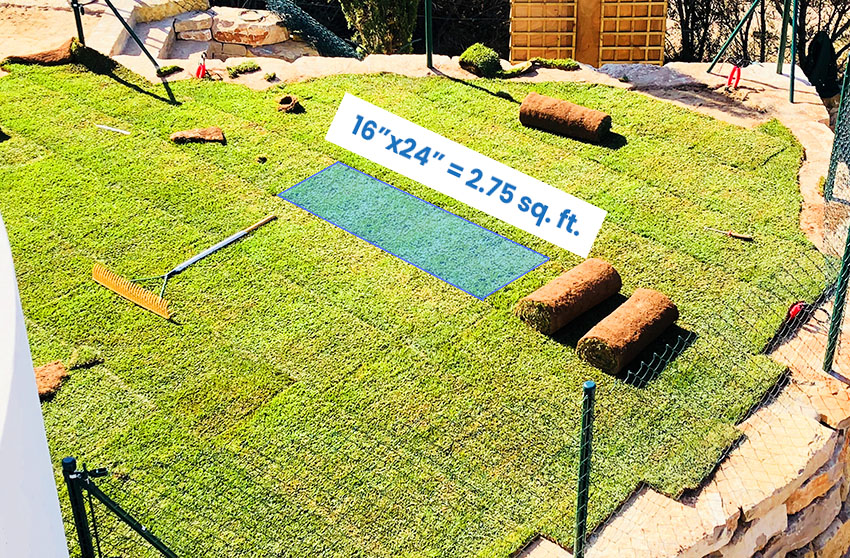
Determining the area of your yard is the first step to finding out how many pieces of sod will be used for the given space. Once you have that, it will be easier to calculate the exact amount of pieces you will need.
Since the average and widely cut sod size is the 16 by 24 inches one, let’s take that as an example to figure out the square area.
A piece of sod size 16 by 24 inches will cover the size of 2.75 square feet of space. To calculate how many standard pieces you will need for your area, get the total space measurement by its length and width and then divide the value by 2.75.
Sod Roll Dimensions

For more extensive yard work, the more intelligent choice will be using longer pieces, which are the rolls. Like slabs, which will vary in size, this is also the case for rolls.
The most common sod roll has a length that runs at 80 inches or 203 centimeters with a width of 18 inches or approximately 46 centimeters. This size will cover an entire 10 square feet area.
There are also shorter rolls at 60 inches or 152 centimeters with wider widths at 24 inches or about 61 centimeters. This size will also cover an area of 10 feet.
Another smaller roll size will have a length of 40 inches or 102 centimeters and a width of 18 inches or 46 centimeters that will cover an area of 5 square feet.
Standard Sod Roll Size

The standard sod size is not necessarily a set one, but it is a size most farms and any landscaping supplier will carry.
This sod roll will cover up to 90 square feet of yard space since it will have a length of 54 inches or 137 centimeters and a width of 24 inches or about 61 centimeters. This standard will usually carry a thickness of 1 inch or about 3 centimeters.
Some farms or landscaping supply stores will carry rolls in dimensions of 52 inches or 132 centimeters for the length with a width of 24 inches or 61 centimeters.
How Many Rolls Of Sod On A Pallet?
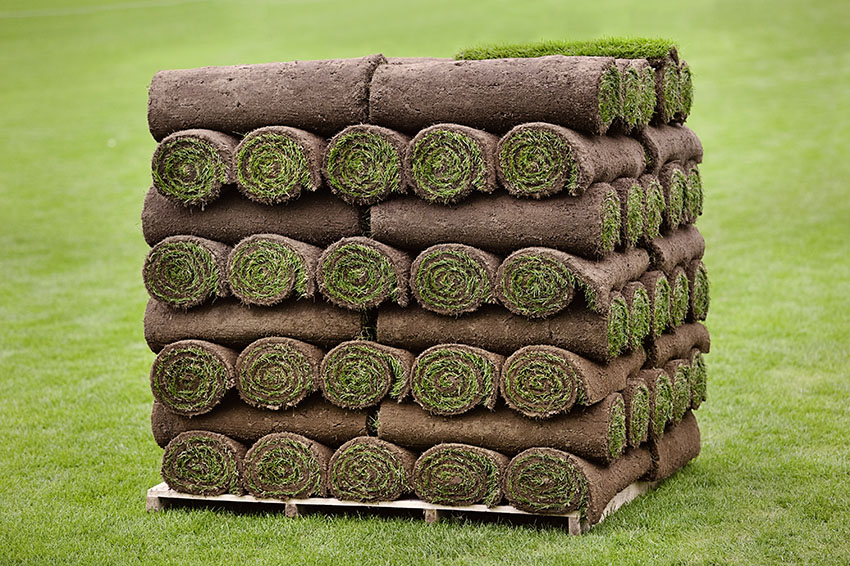
How many sod pieces will be on a pallet will depend on the farm or any other suppliers harvesting the grass materials. Some farms or landscaping manufacturers will offer more pieces per pallet, but it will usually be smaller in dimensions, while some can provide bigger-sized rolls in fewer pieces.
A pallet with an individual roll size of the standard sod slab of 16 by 24 inches can have 170 pieces in the pallet, while one manufacturer who offers bigger rolls at 5 by 2 feet size will have 60 pieces in a pallet.
How Much Does A Roll Of Sod Weigh?
The average weight of a single piece of sod is 15 to 30 pounds or about 7 to 14 kilos; however, it can be heavier and will depend on the moisture content of the turf you are looking to acquire for your yard project.
Heavier rolls will mean that it is fresher since they will have more water weight, but they will eventually be lighter once they dry. Another thing that will determine a sod’s weight is how thick it is, and thickness will depend on the root depth and the kind of grass.
On the other hand, a complete full pallet will weigh more by at least 1500 to 3000 pounds or 680 to 1361 kilos.
How Thick Is Sod Usually Cut?
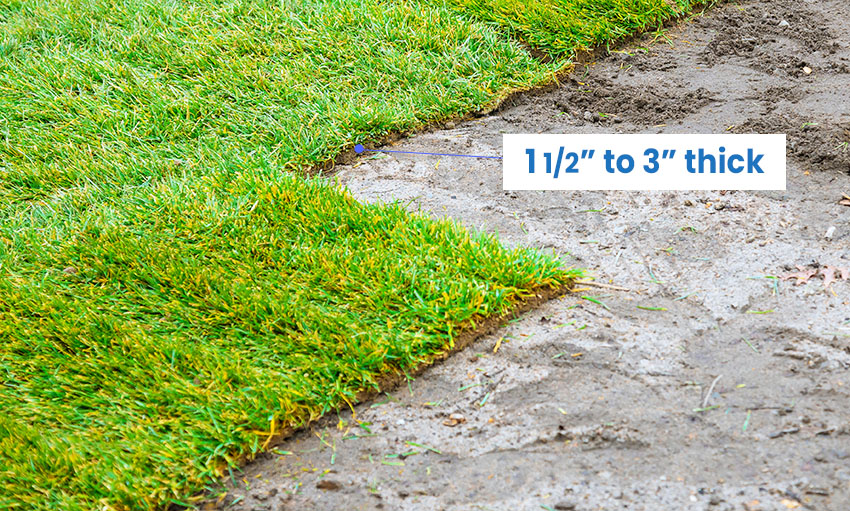
How wide or thick the soil would be will also vary since they will have different thicknesses across the boards depending on the farm or landscaping supply store you plan to get your turf from.
There is no set standard thickness for a single sod piece, but most of them typically have a thickness of 1 1/2 to 3 inches or about 4 to 8 centimeters.
The type of grass and its root depth will dictate how thick a piece will be. One way to help you decide how thick your turf should be is by looking at the soil metric on the sidewalk compared to yours. If the soil in the yard is 3 inches or 8 centimeters below the sidewalk, you will need a thickness of about 3 inches or 8 centimeters.
How Many Pallets Of Sod Do I Need?
To calculate how many pallets of sod you will need to cover the entire area of your yard, it’s essential to know the total size of the space first, from its length to the width.
You should measure your lawn area to determine its size. Once you have the area size, it will be easy to determine the pallet you need using one of the calculators available. Buying a pallet is the best solution if you have a big yard and would like a large lawn area.
Cost of Sod Calculator
This cost of sod calculator can determine how much a project will cost. To get good results, you need to take measurements of the area you want to cover and know the cost of goods and labor.
As a point of reference, the cost of sod is generally about .80 to $1.00 per square ft in 2023. Labor costs can vary depending on the area you live. Generally, you can double the cost by including the total product with the installation cost.
Although laying sod can be tedious, especially during the initial preparation time, it will give you that instant lawn that will complete the look of any yard. The great thing about sod is that it is all-natural, unlike synthetic grasses that not only look fake but are also chemically treated and can harm little pets and fauna if ingested.
Do you have any comments about these sod dimensions? Make sure to leave your comments below to share your experience with buying grass rolls.

